Dude! The ranch has caught fire in the world of cryptocurrencies and Bitcoin is on a tightrope. Imagine the drama: out of nowhere, a bunch of giant investors, those they call "whales" 🐳, decided to drop a bomb of $2.7 billion. Yes, just as you heard, they sold 24,000 Bitcoins! 🤯 That's not a sale, it's an earthquake that causes the price to drop suddenly.
In the midst of all that chaos, ChatGPT's artificial intelligence put on its analyst suit and gave us the key data: Bitcoin is dangerously flirting with a very important support level, that of $112,398.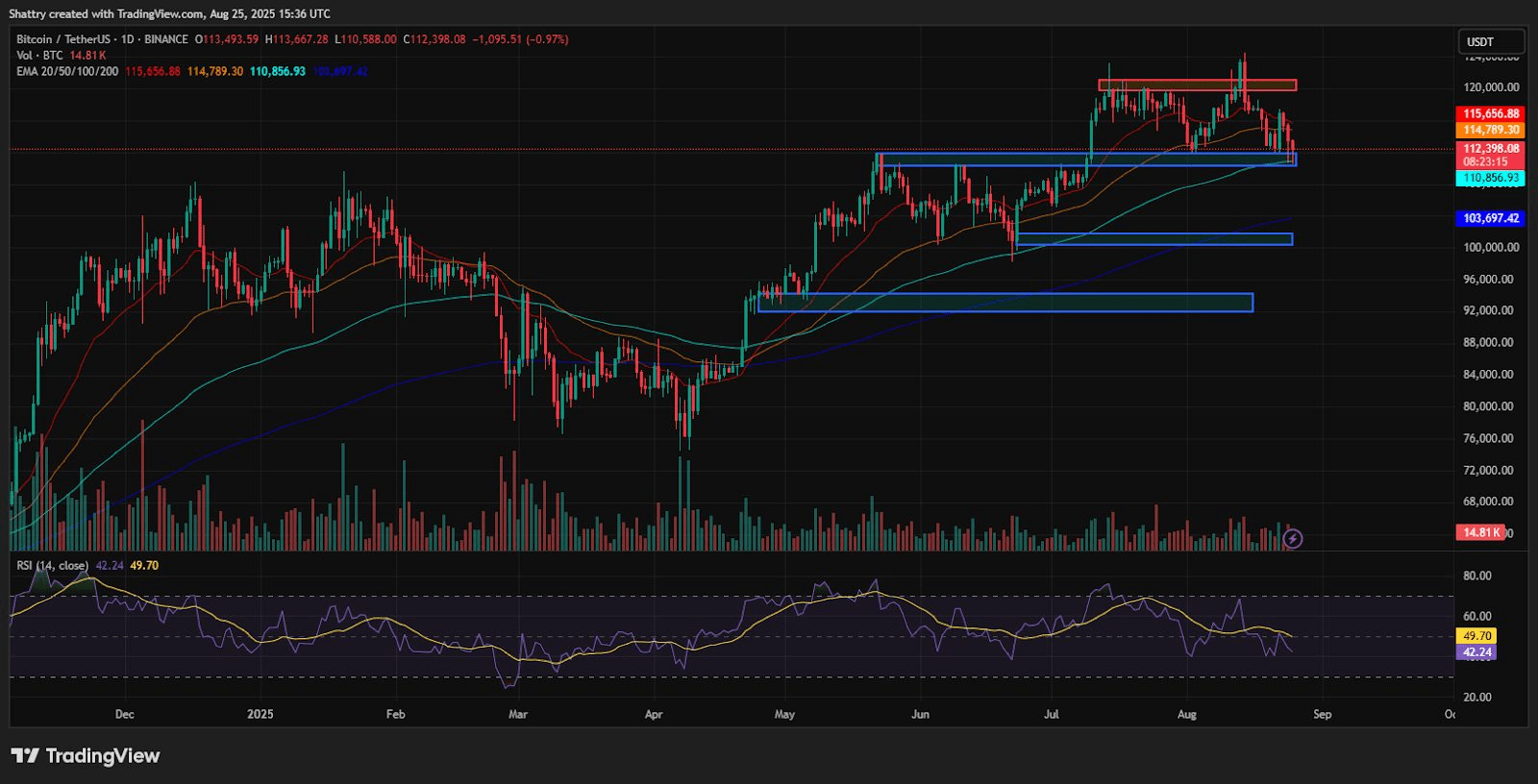 It's as if it were about to fall into an abyss and that number was the last rock to hold onto. But be careful, not everything is panic. While the whales were selling as if there were no tomorrow, a heavyweight institution, MicroStrategy, came out to counter the move and bought $357 million in BTC. That's having guts, my king! 💪
It's as if it were about to fall into an abyss and that number was the last rock to hold onto. But be careful, not everything is panic. While the whales were selling as if there were no tomorrow, a heavyweight institution, MicroStrategy, came out to counter the move and bought $357 million in BTC. That's having guts, my king! 💪
The AI analysis is brutally clear. Based on 26 technical indicators, it tells us that the situation is bearish, with the price below key averages. The RSI is close to the oversold zone, which could be a sign that a rebound is near, but the MACD does not lie and remains in negative territory, showing that things have not improved at all.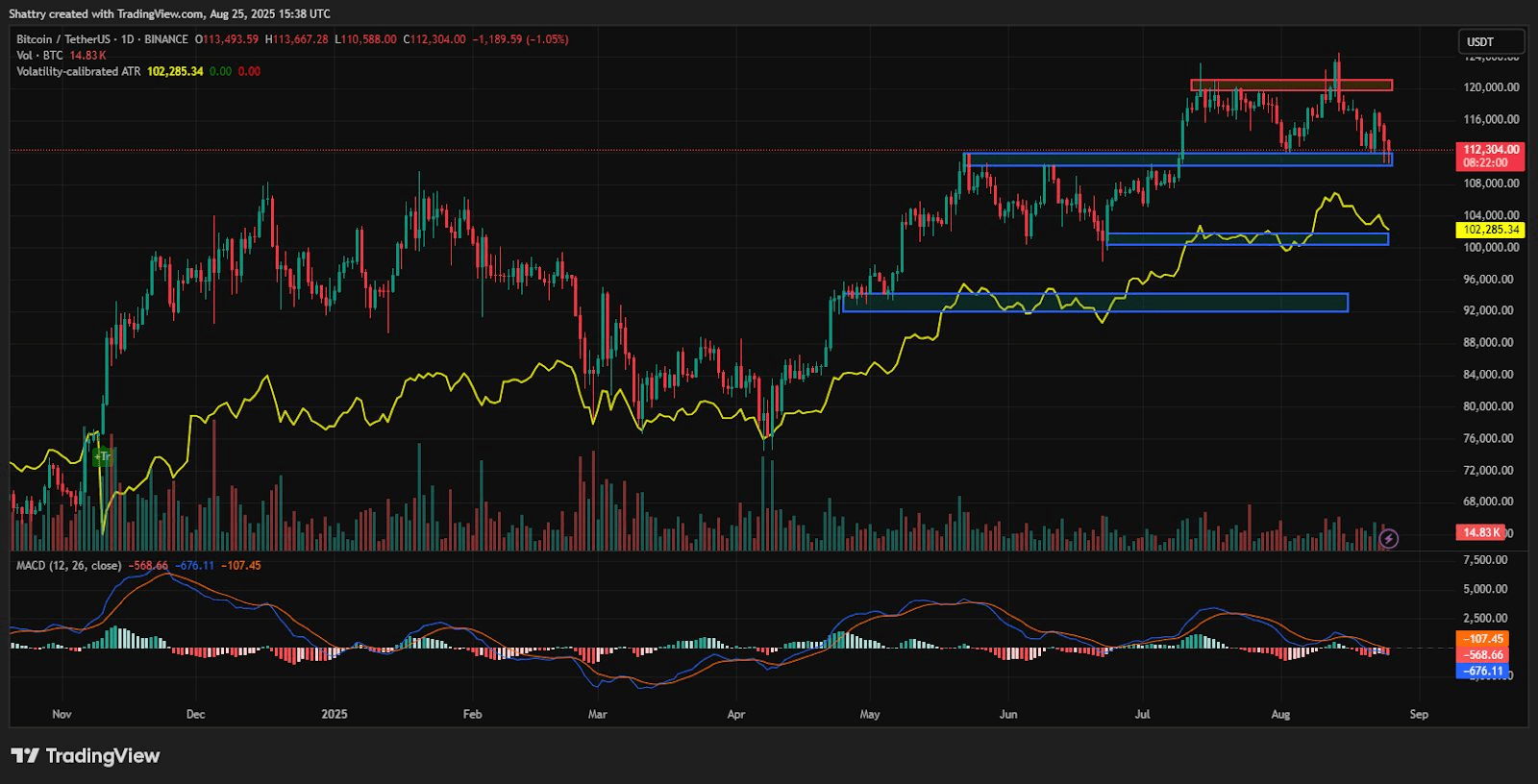
The AI's forecast gives us three possible scenarios, as if it were a suspense movie:
Defense of 110.8K (40% probability): If Bitcoin manages to hold that key support and institutions continue to buy, we could see a rebound of up to $122,000.
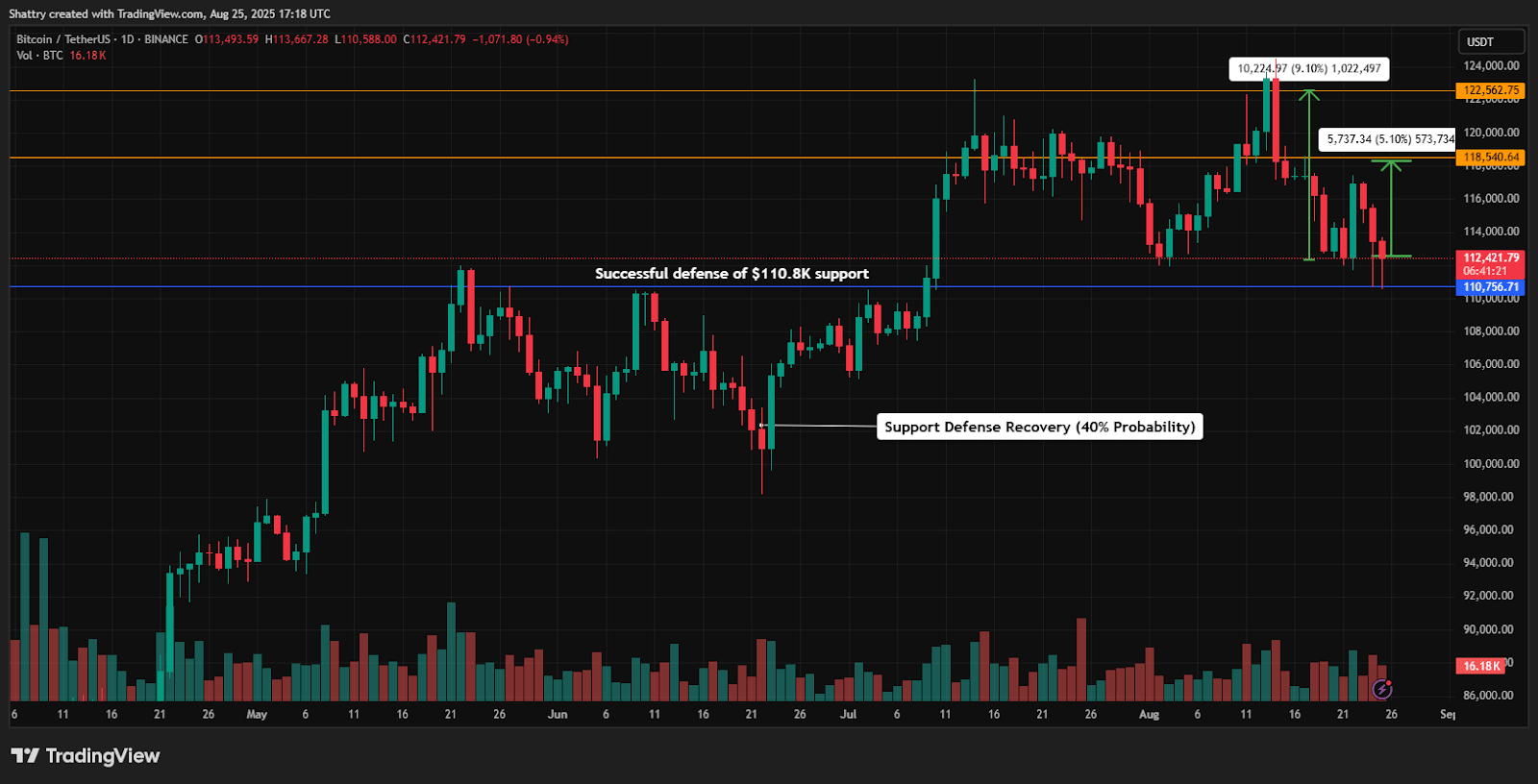
Extended distribution (35% probability): If the whales do not finish selling, the price will remain dancing between $108,000 and $115,000.
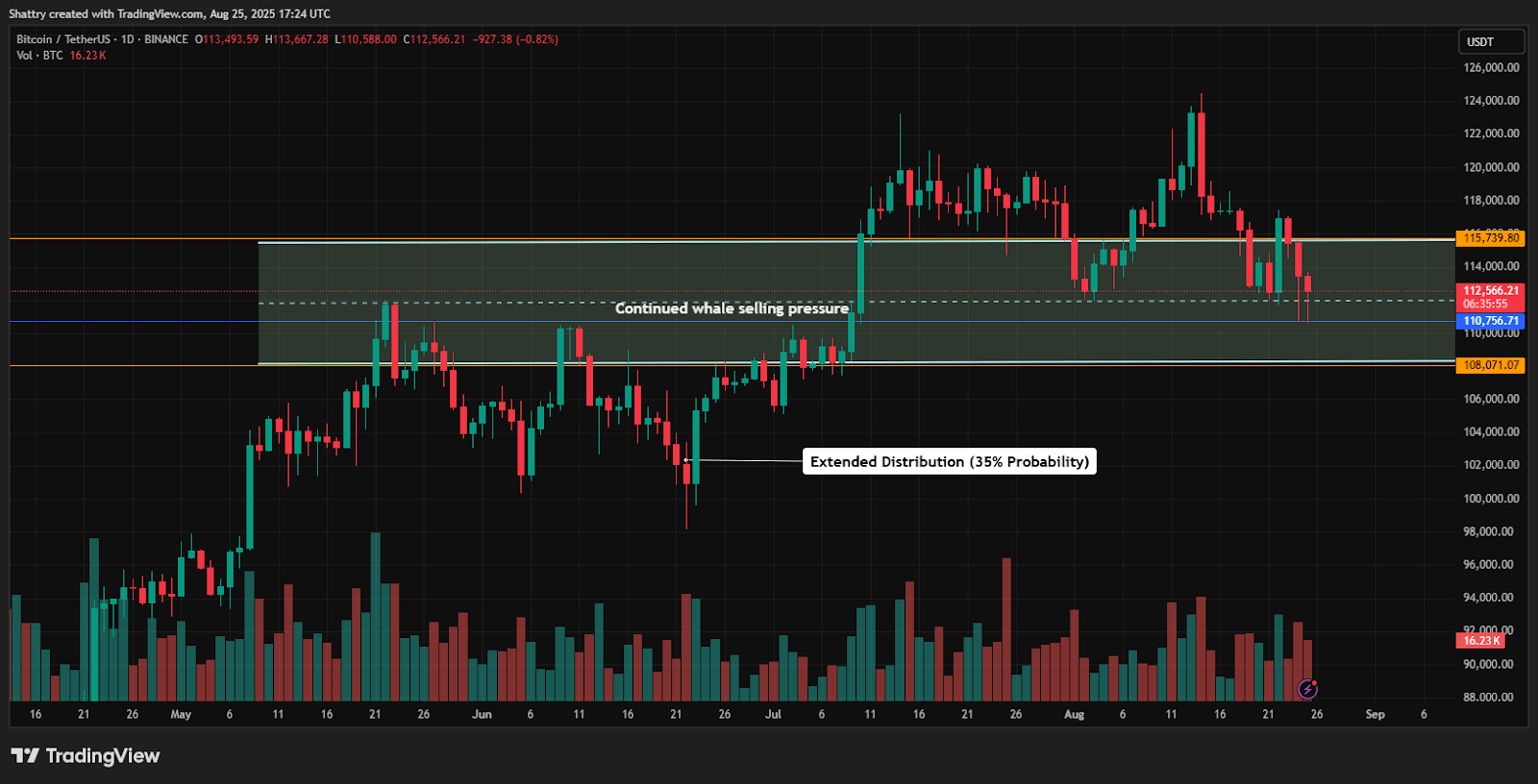
Deep correction (25% probability): If things get ugly and the support of $110.8K breaks, we could fall to $103.7K, creating a golden buying opportunity for those who dare.
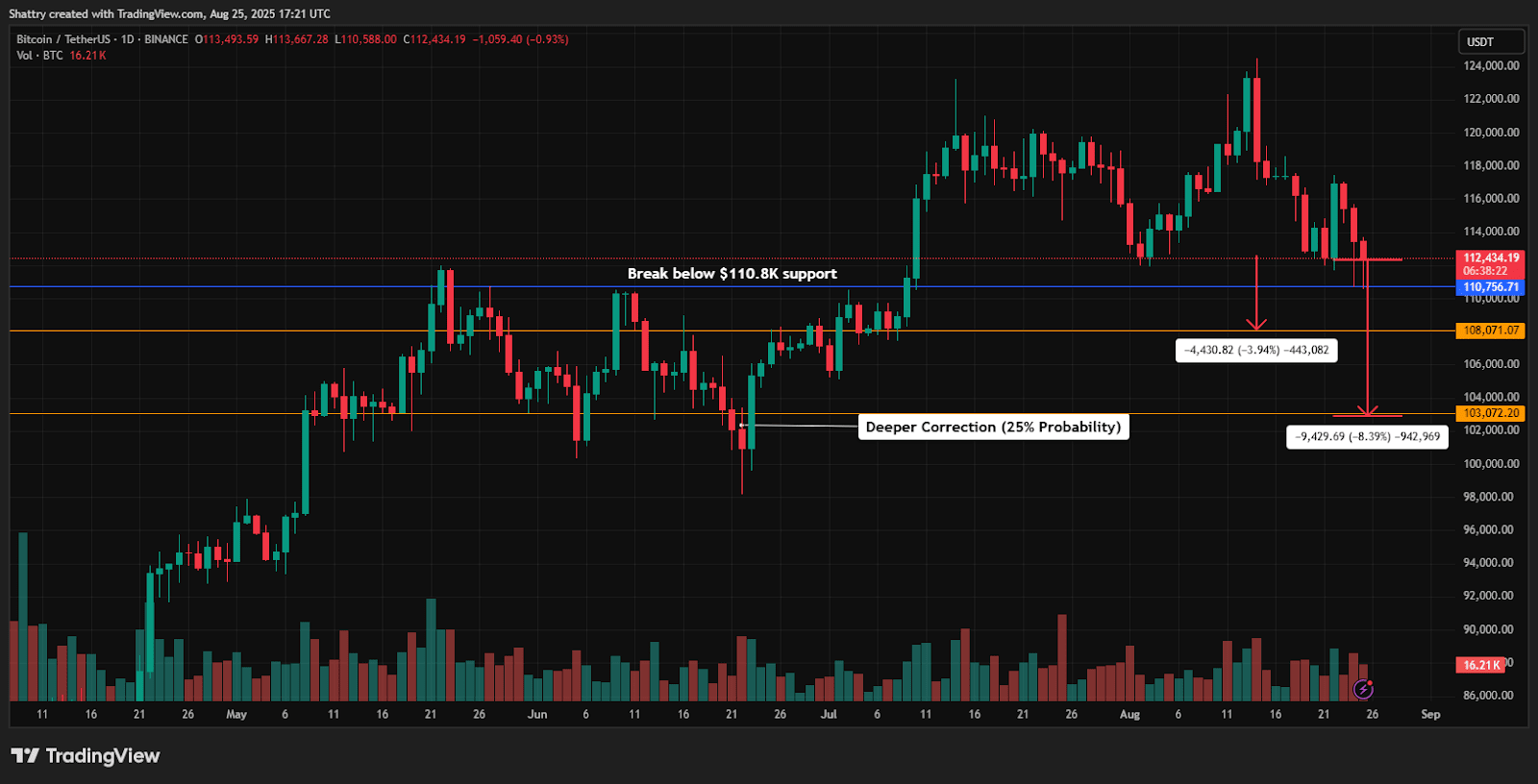
The lesson here is that the price of Bitcoin is not just a number; it is a battlefield between the pressure of the big players who want to sell and the confidence of the institutions that bet on the future. Now the million-dollar question is: who will win this round? Time and the agility of investors hold the answer.

